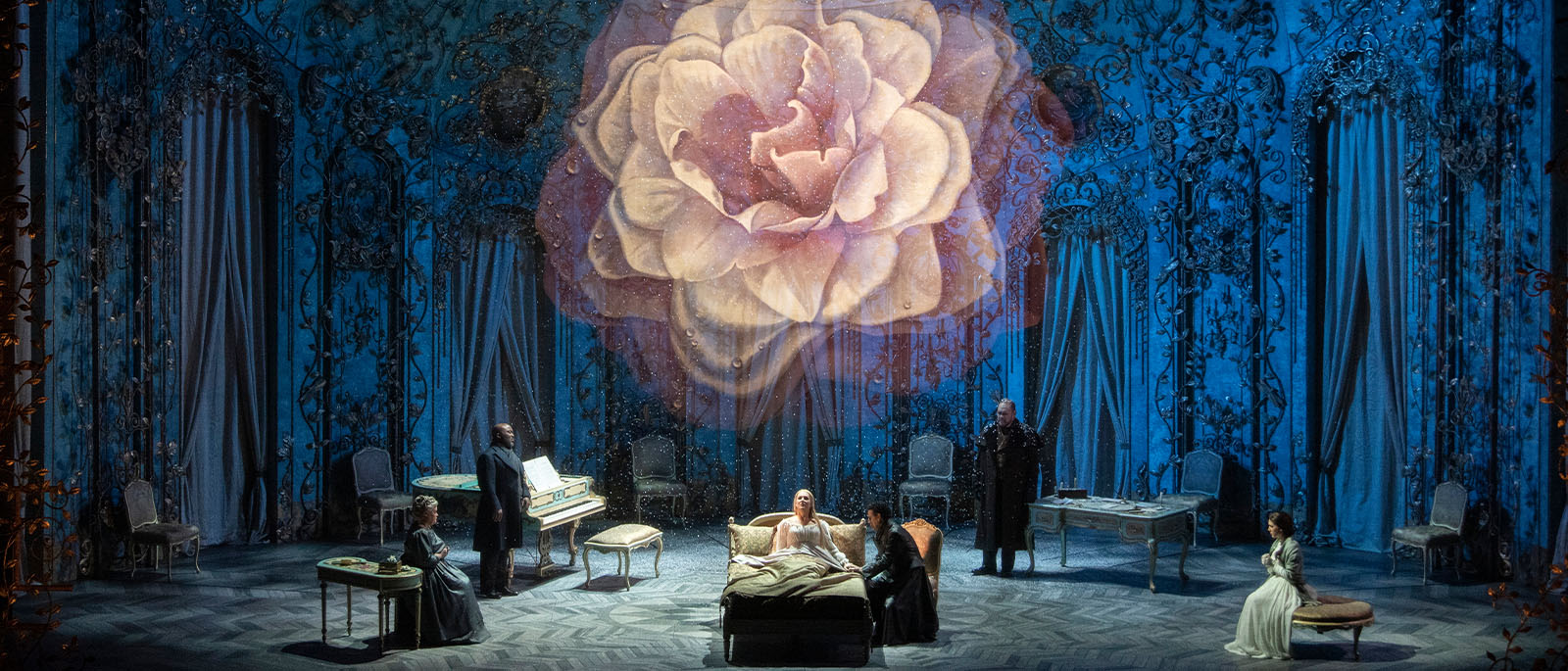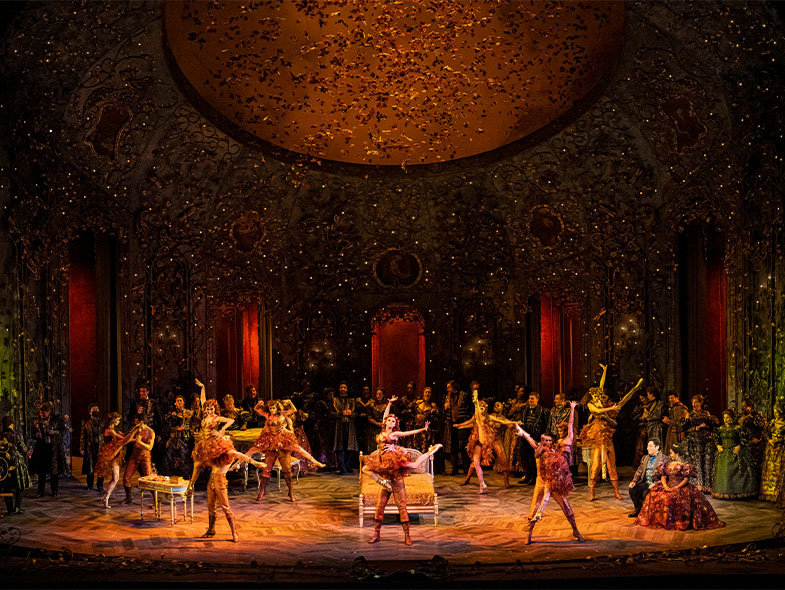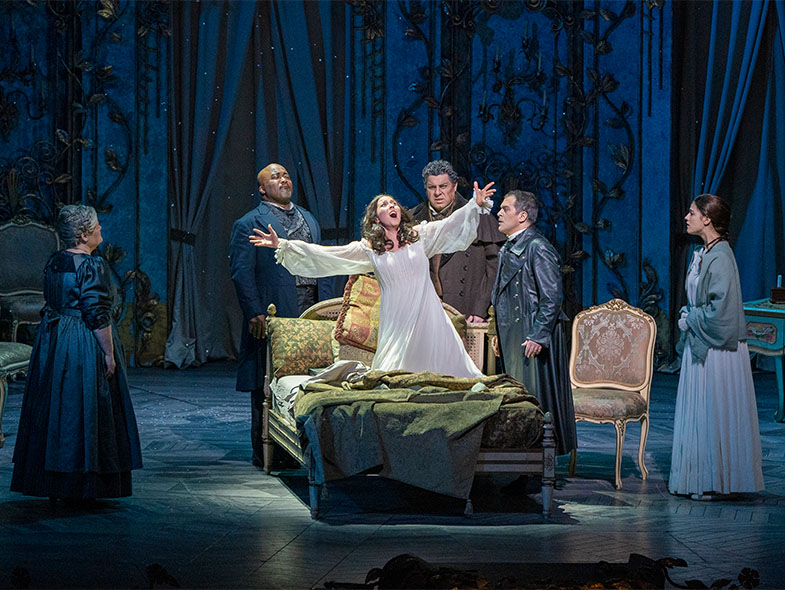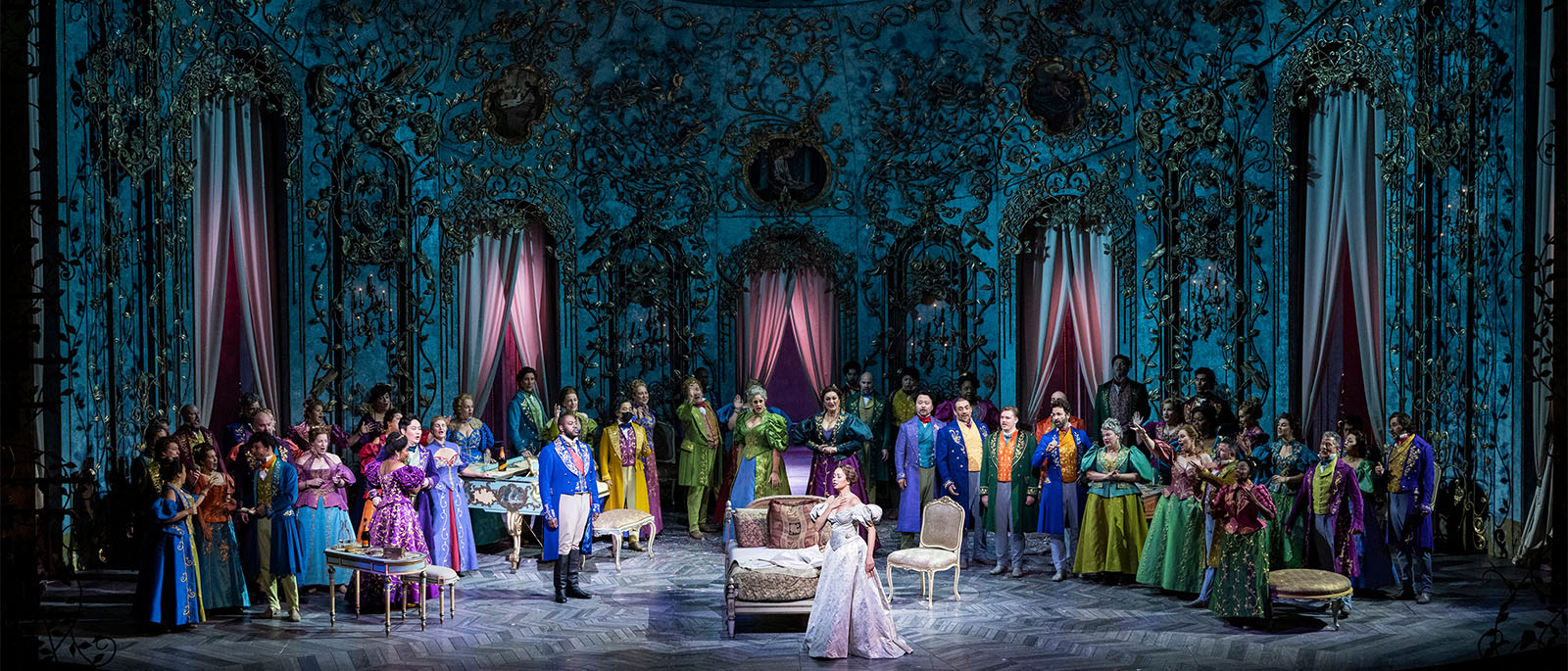
Giuseppe Verdi
La Traviata
Single tickets will go on sale to the general public in June 2025.
Patrons and Subscribers are eligible to purchase single tickets now. Please login to continue.
Overview
A beloved mainstay of the repertory, Verdi’s great tragedy stirs the soul and breaks the heart like only opera can. A trio of captivating artists—Lisette Oropesa, Rosa Feola, and Ermonela Jaho—alternate in the touchstone soprano role of Violetta Valéry, the ill-fated Parisian courtesan fighting for love before her time runs out. Tony Award–winning director Michael Mayer conjures a dreamy setting that matches the poetry and passion of the unforgettable score.
Production a gift of The Paiko Foundation
Additional funding from Mercedes T. Bass, Mr. and Mrs. Paul M. Montrone, and Rolex
Revival a gift of Viking
Languages
Languages sung in La Traviata
Sung In
Italian
Titles
Title languages displayed for La Traviata
Met Titles In
- English
- German
- Spanish
- Italian
Timeline
Timeline for the show, La Traviata
Estimated Run Time
2 hrs 40 mins
-
House Opens
-
Acts I and II
75 mins
-
Intermission
30 mins
-
Acts II (Part Two) and III
55 mins
-
Opera Ends
Cast
Select a date from the dropdown to filter cast by date of performance

World premiere: Venice, Teatro la Fenice, 1853. Verdi’s La Traviata survived a notoriously unsuccessful opening night to become one of the best-loved operas in the repertoire. Following the larger-scale dramas of Rigoletto and Il Trovatore, its intimate scope and subject matter inspired the composer to create some of his most profound and heartfelt music. The title role of the “fallen woman” has captured the imaginations of audiences and performers alike with its inexhaustible vocal and dramatic possibilities—and challenges. Violetta is considered a pinnacle of the soprano repertoire.
Creators
In a remarkable career spanning six decades in the theater, Giuseppe Verdi (1813–1901) composed 28 operas, at least half of which are at the core of today’s repertoire. Francesco Maria Piave (1810–76) was Verdi’s librettist during his productive middle period, who also worked with him on Ernani, Macbeth, Rigoletto, and La Forza del Destino, among others. Alexandre Dumas fils (1824–95) was the son of the author of The Three Musketeers. The play La Dame aux Camélias is based on his own novel of the same name.
PRODUCTION
Michael Mayer
SET DESIGNER
Christine Jones
COSTUME DESIGNER
Susan Hilferty
LIGHTING DESIGNER
Kevin Adams
CHOREOGRAPHER
Lorin Latarro

Composer
Giuseppe Verdi
Setting

With La Traviata, Verdi and Piave fashioned an opera from a play set in contemporary times—an exception in the composer’s long career. Dumas’s La Dame aux Camélias was a meditation on the author’s youthful affair with the celebrated prostitute Marie Duplessis, known as a sophisticated and well-read woman whose charms and tact far surpassed her station. The play is still staged today in its original form and exists in several film incarnations, most notably Greta Garbo’s Camille (1936).
Music
Verdi’s musical-dramatic ability to portray the individual in a marginalized relationship to society keeps this work a mainstay on the world’s stages. The vocal and emotional scope of the title character is enormous—from her Act I show-stopper aria “Sempre libera degg’io” to the haunting regret of “Addio, del passato” in Act III to the extended Act II confrontation with her lover’s father, Germont.

Share This Page
Social Share
Copied